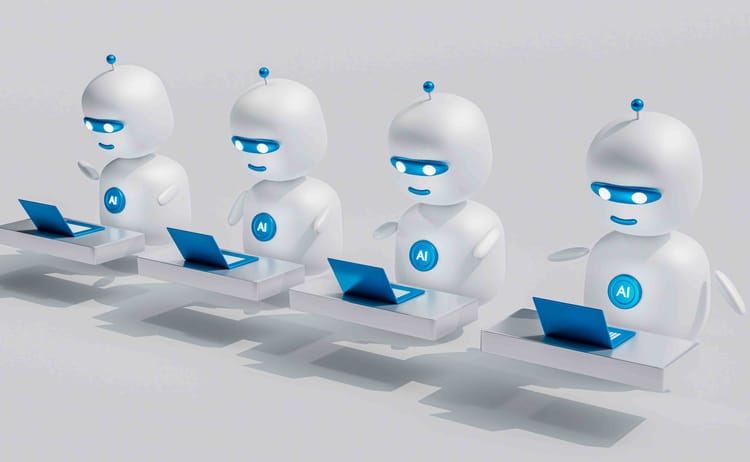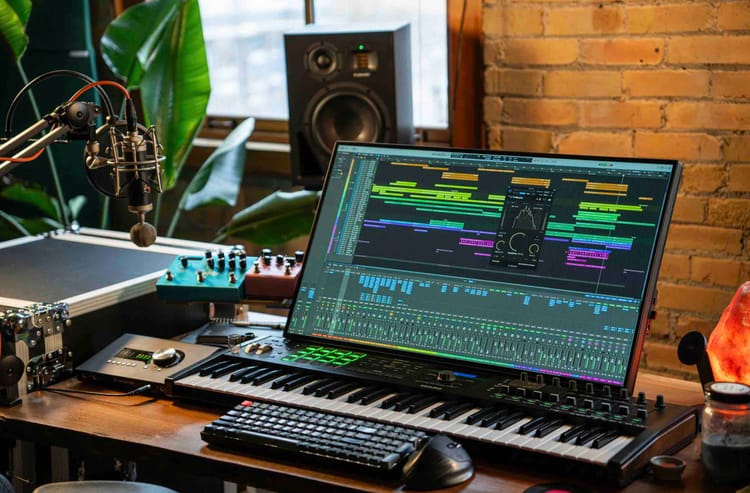Turning a potential listener into an actual listener can be tricky. And one of the key factors determining whether or not someone clicks “play” on your latest episode is how good your podcast description is.
Podcast descriptions are key for getting new potential listeners to momentarily pause in their pursuit for a new show to tune into. You want them to stop at yours, so you need to grab their attention. But how do you do that?
This article will explore everything you need to consider when writing your podcast description. We’ve also pulled together 5 well-crafted examples you can follow for inspiration.
So without further ado…

Book Your Next Podcast Guest the Easy Way
With more than 70,000 members, MatchMaker.fm is the largest online community connecting podcasters & guests.
Join MatchMaker todayIt's free to join!
What Is a Podcast Description?
It’s simple enough. A podcast description describes your show, what it’s about, and who it’s for. It gives people a flavour of what to expect.
We’ll provide a checklist of everything you should include a bit later, but as a baseline, a good podcast description tells the reader everything they need to know to make a decision on whether your podcast is what they’ve been looking for.
Think of your description as an elevator pitch for your podcast. Short, punchy, and enticing. If you can grab the reader’s attention, they’re more likely to listen. The more interesting you can make your show sound, the better.
Why Are Podcast Descriptions Important?
As mentioned previously, podcast descriptions are one of the first things that the potential listener will see, besides your artwork and title. If done well, they can persuade readers to become listeners. If done badly, they’ll probably scroll on. No pressure, right?
With that in mind, it’s important that your description captures the essence of your show.
Podcast descriptions aren’t crucial to your SEO performance. So don’t worry about littering them with optimised keywords. Listening platforms will only make recommendations based on show name and episode titles - not descriptions. If you’re trying to improve your search performance, you might want to focus on crafting a good podcast title instead.
Where Does a Podcast Description Go?
Your podcast description sits inside your show’s profile on all major podcast listening platforms. And whether that’s Spotify, Stitcher, Google, or Apple Podcasts, it’ll typically be at the top of the page, in close proximity to your latest episodes. You can see an example of how it’s typically displayed below (appearance and placement varies across platforms):
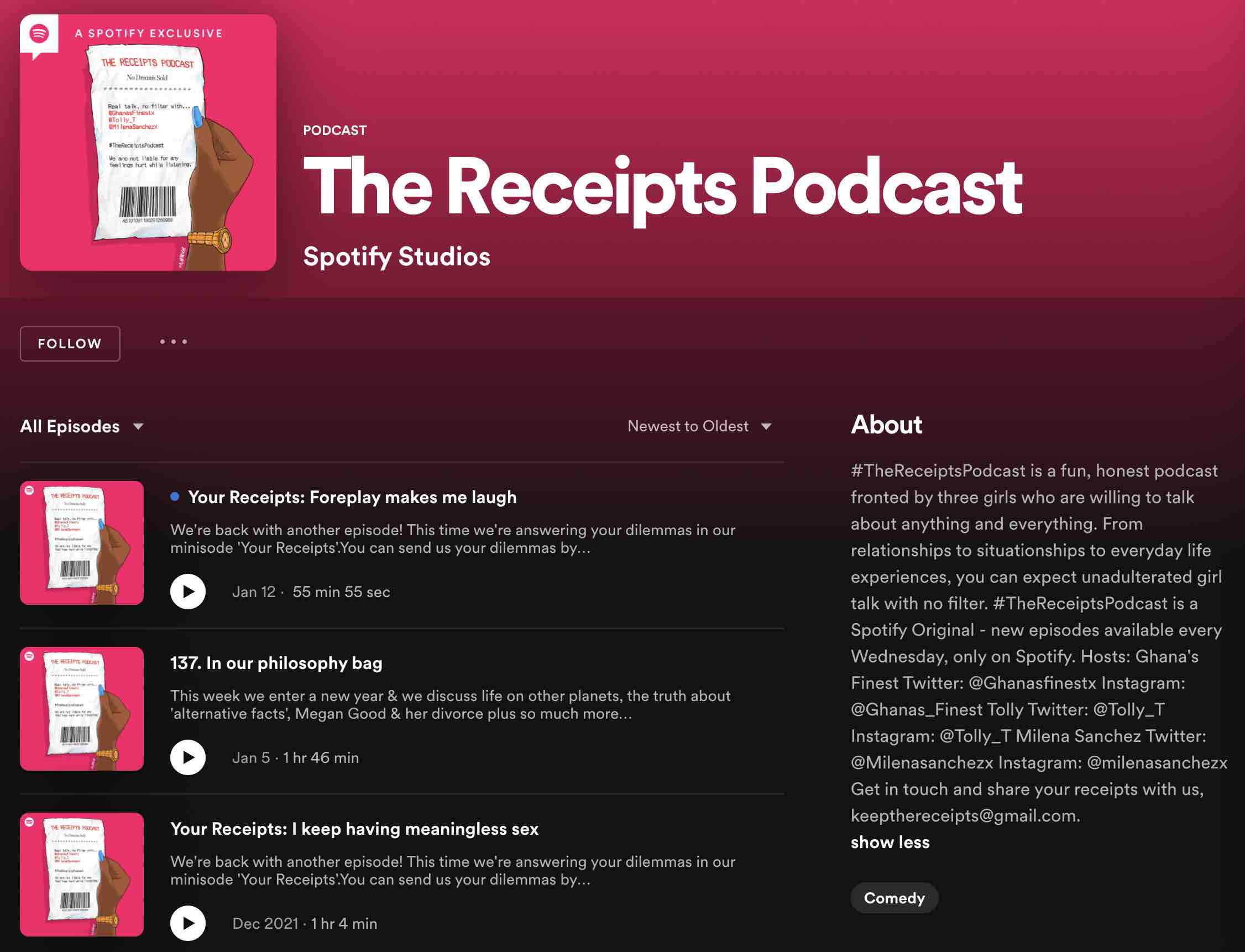
5 Things to Include in Your Podcast Description
Now that we’ve got the what, why, and where out of the way, it’s time to think about what you should actually include in your podcast description. Descriptions shouldn’t be painfully long. Try to make them as concise as possible. With that in mind, here are 5 things that are generally good to include.
1. About You (The Host)
Creating a good host-to-listener relationship is key for having a successful podcast. So telling the potential listener a little bit about you is helpful for getting things off to a good start. Don’t say too much though. They’ll get to know you by actually listening to your show. You might want to give an interesting fact about yourself, or tell them a bit about why you’ve started your podcast.
2. Who Your Target Audience Is
It’s important to speak to your listeners directly. And your podcast description is the perfect place to do that. Take some time to think about who your show is aimed at, and write it down. Providing a relatable statement is one of the easiest ways of attracting your target audience. If you can directly call them out, they’ll find it easier to find and connect with you.
3. What Can the Listener Expect?
Being transparent about the content of your podcast is key. For example, you might find talking about your show’s genre useful. If you’re a comedy podcast, let them know that they can expect to be entertained. The goal is to spark interest, and managing people’s expectations can save you from wasting their time.
4. What Value Will the Listener Get?
When trying to spark interest in your show, providing some sort of justification as to why the potential listener should give you their time is necessary. There has to be some sort of gain (or two) in it for them. Will they learn something from your show? Are you offering a rare insight into a specific topic? What are you offering that other podcasts aren’t?
5. Your Release Schedule
This one’s easy. Make sure you state your release schedule in your podcast description. Doing so is just good practice. It tells the potential listener how often you’ll be releasing new content. If you plan to release episodes sporadically, then obviously don’t include this (but if you’re serious about building an audience, regularity and consistency matters - a lot).
5 Great Podcast Description Examples
To help you get a better idea of what “good” looks like, we’ve picked out 5 podcast description examples you can take inspiration from. Think about how you could apply some of these creative elements to your own show when drafting your own description.
Example #1: The Always Sunny Podcast

Key Takeaways:
- Concise description gives the reader a good understanding of the podcast’s theme
- The 3 hosts are introduced - Glenn, Charlie and Rob
- Target audience is identified (fans of TV show It’s Always Sunny in Philadelphia)
- Description clearly states what value the listener will get from the show (behind the scenes insight)
Example #2: The Diary of a CEO with Steven Bartlett
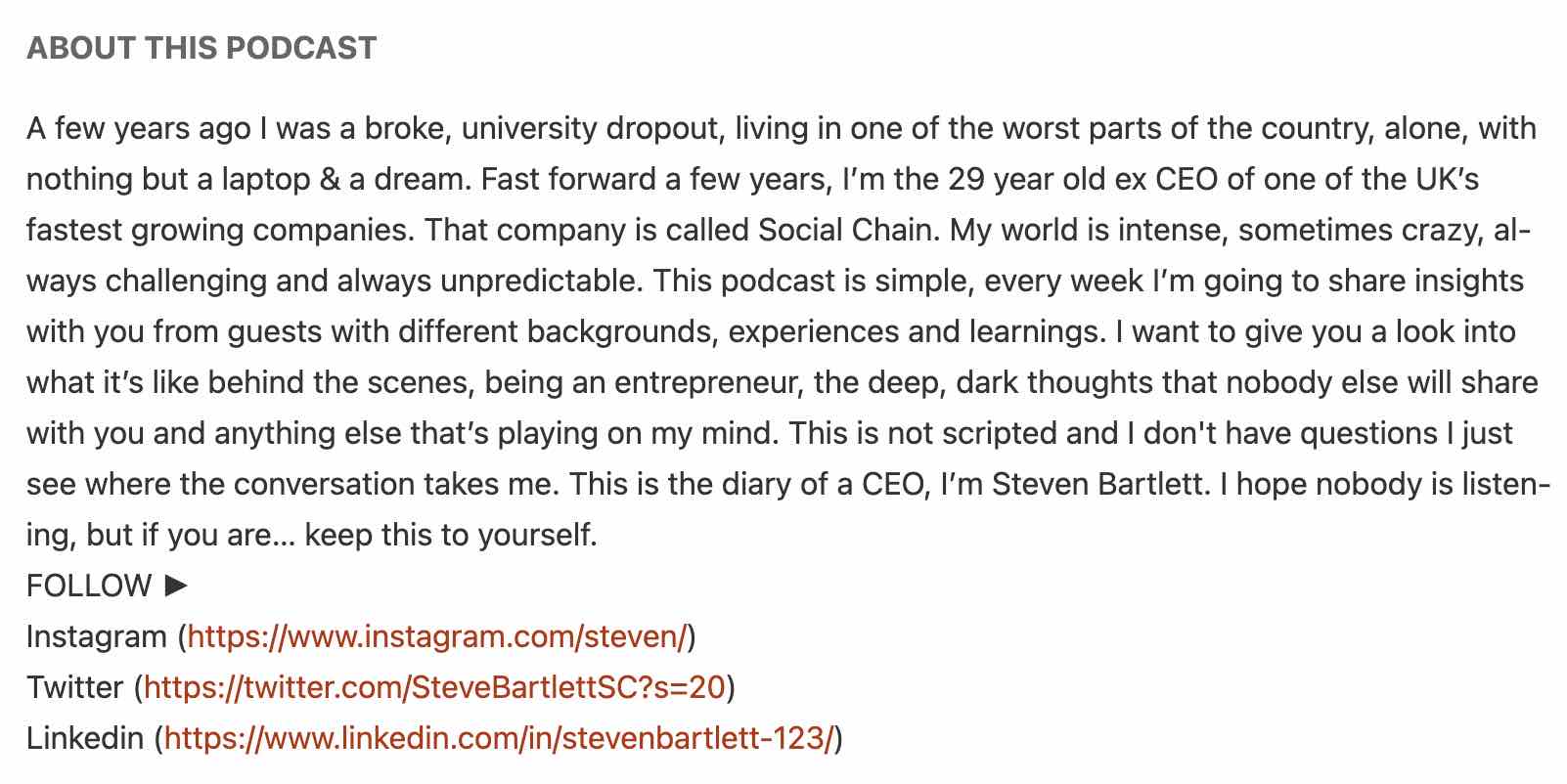
Key Takeaways:
- Description provides good context about the host and the podcast’s backstory
- Release schedule is introduced (weekly)
- What the potential listener can expect from the podcast is clearly communicated
- Various call-to-actions direct readers to the host’s social feeds
Example #3: The Crime Countdown
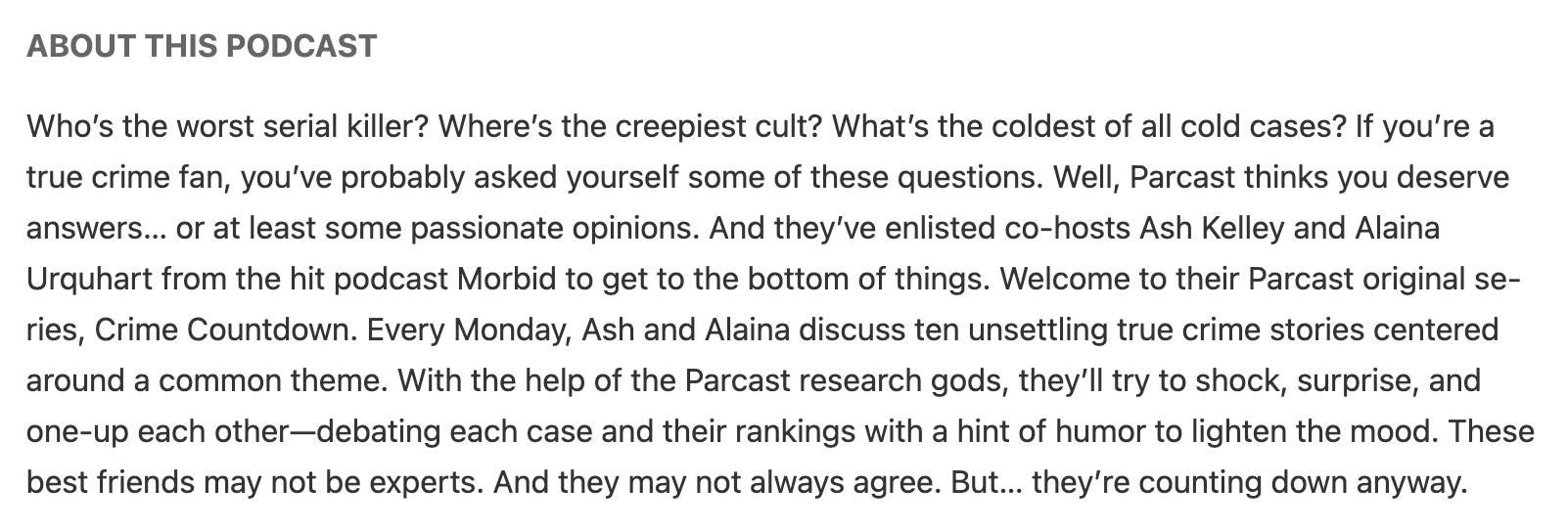
Key Takeaways:
- Opening format speaks directly to the reader - questions are great for grabbing attention
- Target audience is clearly addressed early on (true crime fans)
- Hosts are identified and the release schedule is stated
Example #4: And Just Like That…The Writers Room
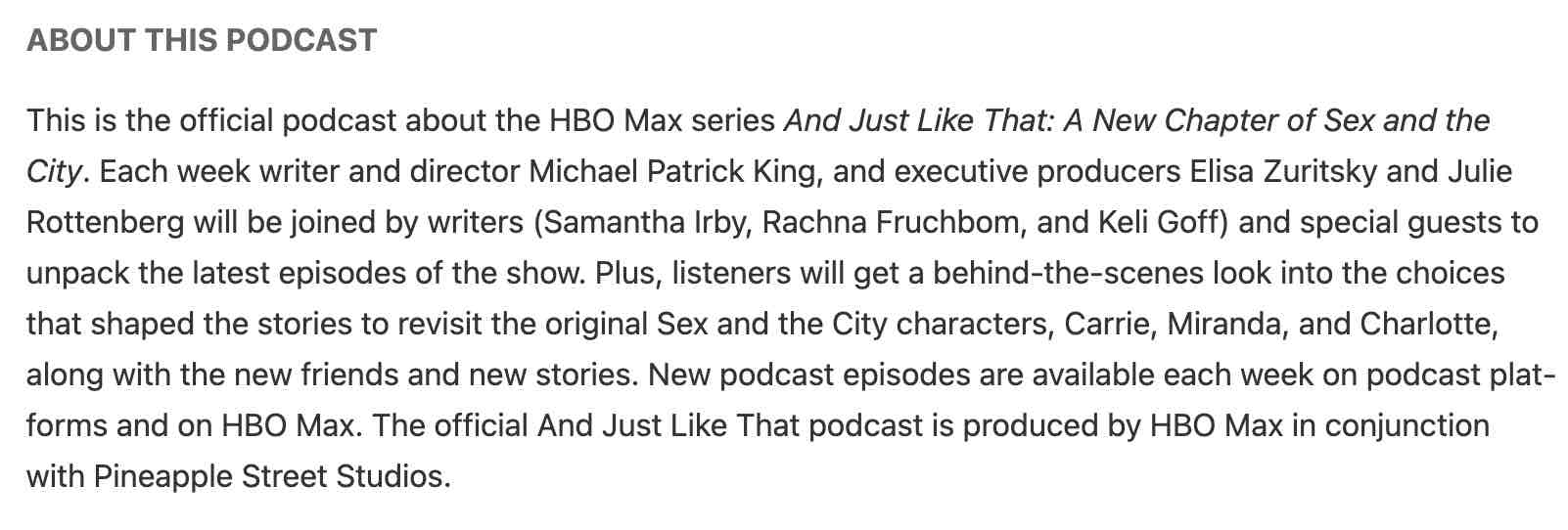
Key Takeaways:
- Release schedule and information about the host(s) is established straight away
- The reader is told exactly what they’ll get out of listening
- The premise of the show sounds appealing
- Target audience is clearly identified and catered to (fans of Sex and The City)
- Production details are listed
Example #5: And That’s Why We Drink

Key Takeaways:
- Short and simple structure gives the reader a concise summary
- The show sounds fun, interesting, and engaging
- Release schedule is made clear
First impressions matter - now more than ever due to increased competition in the podcast market. Give your podcast the best possible chance of success by crafting a description that does it justice. Even if you have to spend 3 or 4 hours to get it just right, it’s well worth the time investment.
Incorporating some of the best practises from the podcast description examples above will help you hook the right listeners and expand your audience.

The #1 Podcasting Community
With more than 70,000 members, MatchMaker.fm is the largest online community connecting podcasters & guests.
Join MatchMaker todayIt's free to join!




